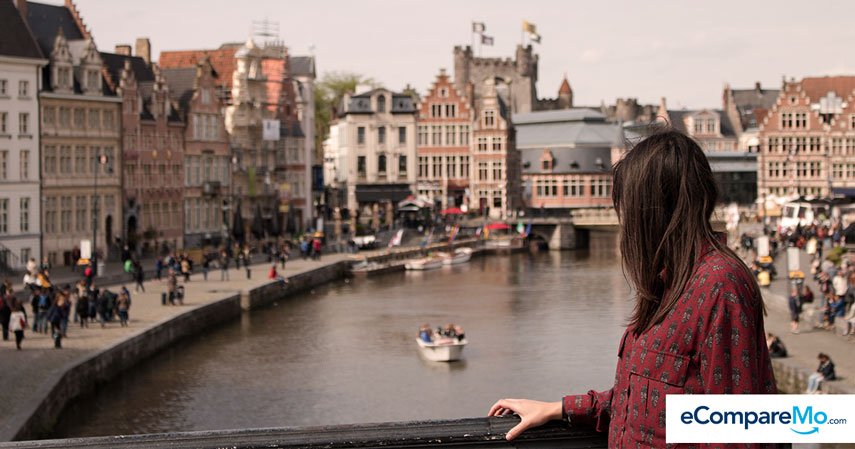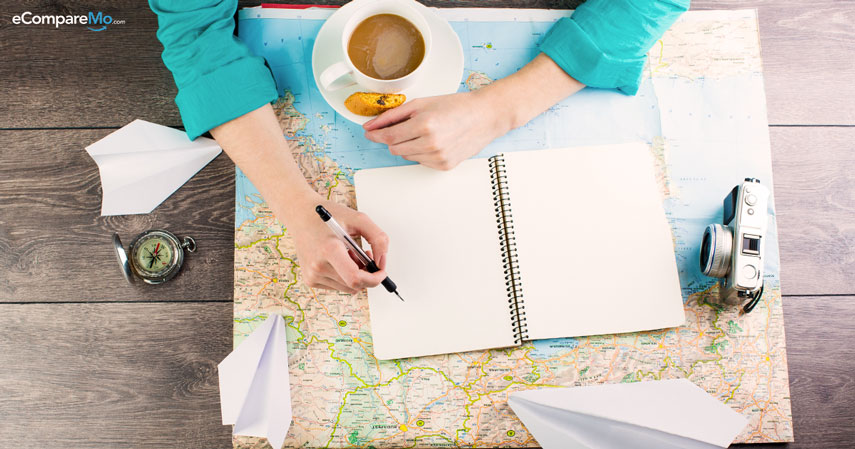How I Traveled Across Europe For P200,000
6 min readTraveling to Europe is extremely expensive, it appears to be impossible for most of us. Operative word: appears. Airfares are expensive, and hotel rooms even more so. There are visa expenses to prepare for way ahead of the trip, and then of course, there’s your per diem.
But it doesn’t have to cost an arm and a leg. All it takes is a little discipline, a lot of planning, an easy low-maintenance attitude, an appetite for fun, and enormous creativity.

1. Make traveling to Europe something of a one-year plan.
This will allow you to save money. Create a travel fund and then double down by saving however you can: Bring baon to work, transfer all that change in your pocket to a piggy bank every night, maybe sacrifice your happy hour habit for now. Besides, you’re going to need to show you’ve got the money when applying for a visa. So start saving early.
2. Know by heart where you want to go.
Europe is a huge continent so be as specific as possible. Which of your friend’s #wanderlust photos gives you itchy feet? Learn more about that place—visit blogs, check Lonely Planet, read up on its history and culture. Mine was the UK because I wanted to catch a reunion concert of one of my favorite bands.
3. Maximize your airfare expense by visiting countries near your dream destination.
Planning routes are usually done by region—southern Europe is where Italy and Spain are, for instance—so check the map. When you’re knee-deep in research, you might also find interesting routes, like the ever-famous hedonistic trail of Amsterdam-Berlin-Prague, Budapest, so research.
Unfortunately, this is where I went off-the-beaten path. Apart from UK, I had been aching to see Stockholm and Amsterdam, two cities not particularly close to each other, or to the UK for that matter. But I was a stubborn noob so I went ahead with it.
Knowing what I know now, it’s something I would’ve done differently; I would’ve lumped Stockholm together with other Scandinavian cities and reserved that for when I had a much better budget than P200,000. And I would’ve just crossed the channel to France and then made my way to Amsterdam. That way, I at least got two-thirds of my dream destinations.
4. Set a visa appointment.
Even if your papers aren’t in order yet, it’s always best to set a schedule early. Allot three months between your visa appointment and your departure date.
With my three-city trip, I needed to work on obtaining two visas: UK, for the London stop and Schengen for Stockholm and Amsterdam. Where to apply for your Schengen, you may ask. My simplest solution is to get your visa from your port of entry, and then spend the most time there. For me, that was Stockholm.
5. Ready your documents.
Both UK and Schengen territories require that you show you can afford that trip: that you have a job, that it has allowed you to go on leave, that you have the spending power, and that you have something to return to. Here is where your bursting bank account will come in handy, as well as other cute investments you’ve got going.
6. Start booking.
Visa applications will require you to show the consulate your bookings. While Europe is expensive, we thankfully live in the time of AirBnb and couch surfing. Add those to Europe’s very advanced hostel culture and you’ve got a better chance of saving a few more bucks.
To a first-time solo traveler, I highly suggest trying a hostel for a variety of reasons: (a) hostels usually have a fantastic program of parties and entertainment; (b) a simple breakfast is included in your dirt-cheap booking; (c) hostels are a hotbed for newbie tour guides who usually have a pay-what-you-want scheme; (d) you can easily meet new friends who may introduce you to other aspects of the city you may not know about. Book through booking.com; it has no cancellation fee in case the consulate decides to rain on your parade.
8. Don’t buy an airline ticket just yet.
While, you’ll also need to show airfare bookings, don’t spend on plane tickets until you’ve gotten your visa approved. Secure your ticket only when you’ve been issued a visa.
9. Consult with a professional.
Right around at this step, it became clear to me that my London-Stockholm-Amsterdam route wasn’t very popular. Apart from steep prices, there were limited choices of airlines. So I consulted with a travel agent—feel free to do this, especially when you feel unsure. Make it clear though that you’re only testing the waters, seeking a professional’s advice.
While the travel agent simplified things for me, she also aroused feelings of horror when I saw her quote. So horrified was I that I committed to the DIY travel I have been navigating up to this point.

10. Get resourceful.
Skyscanner, Kayak, notifications of airline sales—they all became my friends so start googling travel apps. It was during this time I learned that flying mid-week was cheaper than flying weekends, and red-eye flights were much friendlier on the pocket than say, an 11 a.m. one on a random Wednesday.
11. Set your daily budget.
It always helps to be frugal, even on holiday. On my first trip, I established a few key moves that I still use to this day: Head straight to the grocery upon check-in, and buy your essentials (mine: a bottle of water, snacks, and beer). Book a hostel with a functioning kitchen and use liberally. Sample the cities’ street food scene; that’s always perfectly within budget.
12. Walk.
It’s a great way to see the city, plus you get to save a few Euros. Take the public transport only when absolutely necessary and avoid cabs. On my first visit, I remember taking a taxi a grand total of once: When it suddenly rained cats, dogs, and kittens, as I exited the Buckingham Palace and there was no shade anywhere.
13. Stay open and flexible.
On a daily basis, I would pop open my Google Maps, consult with the hostel’s front desk, and make and/or change my daily IT; sometimes I’d make a new one altogether with newfound friends.
14. Get it where you can.
Cities like London are amazing in that culture is displayed, right out on the street, free-for-all. After I went to see the Westminster Abbey I saw a long line in another entrance: there was a free classical music inside the church. How can a visitor resist?
Later that day, I found myself lost in another part of the city. I was ready to cry; apart from losing my way, I was hungry and thirsty and was about to tip over my daily budget. But I looked around and realized I was in the thick of a public art exhibit. All I could muster was to take a large gulp of water from my bottle (from the grocery store when I landed, remember?) and acknowledged the fact that maybe, I was in the midst of a miracle.